How to Grow and Care for a Grand Fir
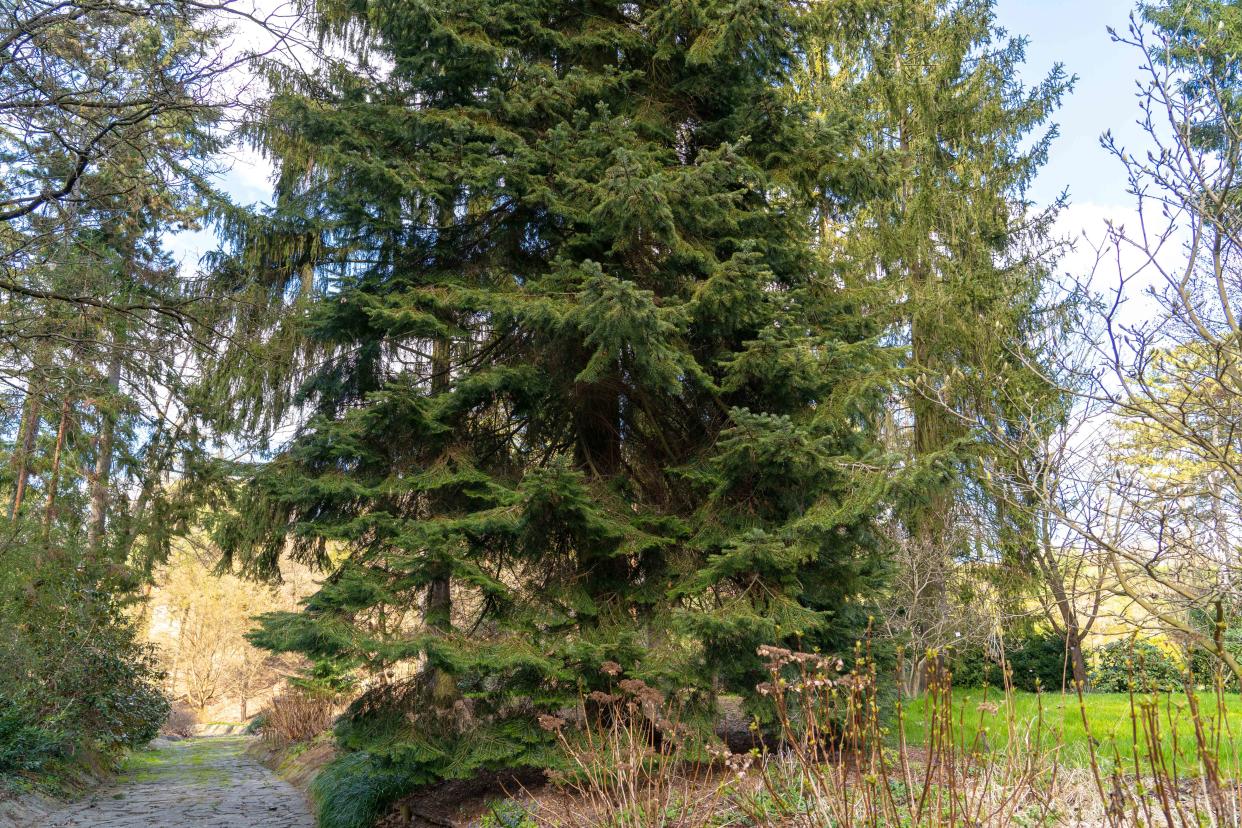
The Spruce / Evgeniya Vlasova
Reviewed by Andrew Hughes
Are you looking for a tree that serves as a large specimen tree that makes a statement with a lot of wow factor? The tallest fir tree in the world that lives up to its name, the grand fir (Abies grandis), maybe that tree.
If you live in a very small slither of the northwestern United States, you can count yourself lucky in the fact you can plant the incredibly majestic grand fir. Of course, you will need a lot of room. This giant can grow to an incredible 250 feet tall and live 300 years in the right location and conditions. For those that do not have quite so long and so much room, there are cultivars available that will allow you to grow smaller sizes of the species or have different forms.
When you have a landscape that needs a species of conifer that will be a massive showpiece without requiring too much care or maintenance, this giant evergreen deserves a look.
Common Name | Grand fir |
Botanical Name | Abies grandis |
Family | Pinaceae |
Plant Type | Coniferous evergreen |
Mature Size | 100-250 ft. tall, 20-35 ft. wide |
Sun Exposure | Full sun to part shade |
Soil Type | Rich, moist, well-drained |
Soil pH | 6.0-7.0 |
Hardiness Zones | 5-6 (USDA) |
Native Area | Northwestern United States |
Grand Fir Care
When considering adding this species to your landscape, one positive note is the relative ease of care involved in the ownership of grand fir. The biggest consideration in its care ultimately involves not the tree itself but where it will be planted. Grand firs are extremely hardy and vigorous if planted in the right conditions and setting. Stray from these conditions, and you may deal with extra care that should not normally be necessary.
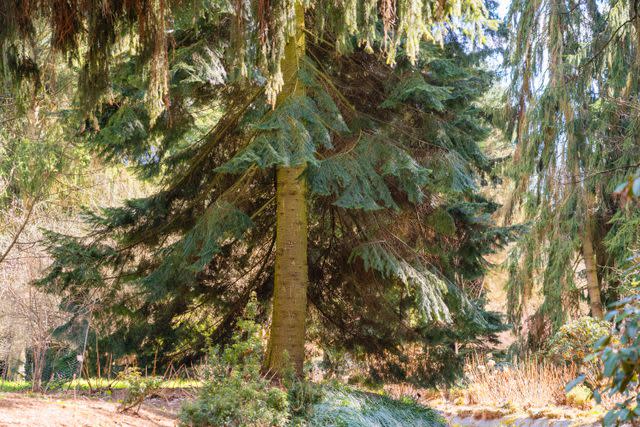
The Spruce / Evgeniya Vlasova
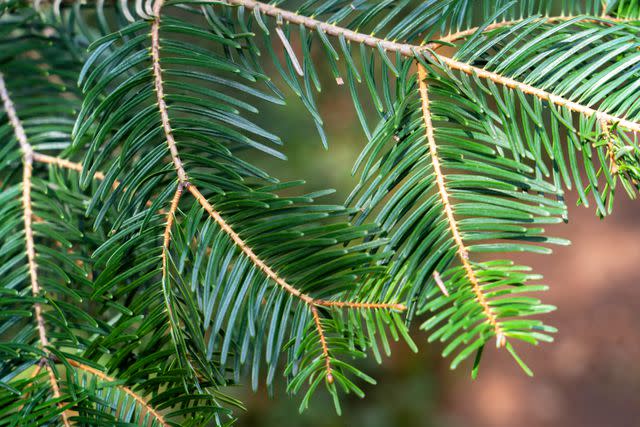
The Spruce / Evgeniya Vlasova
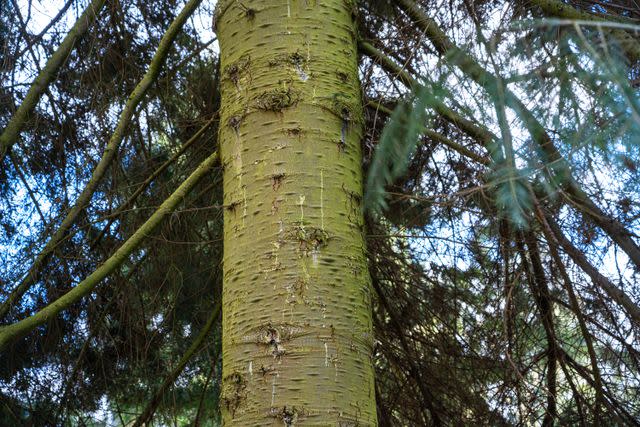
The Spruce / Evgeniya Vlasova
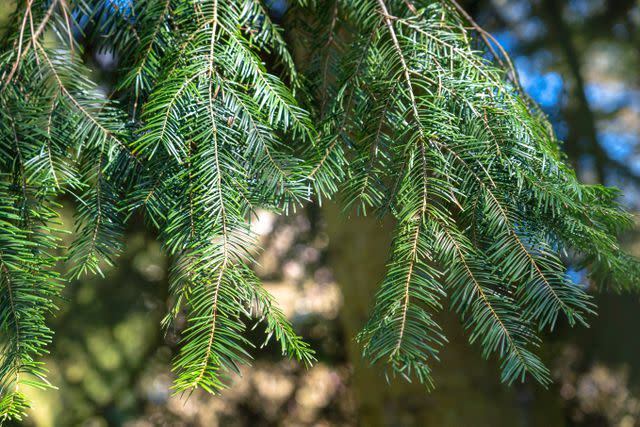
The Spruce / Evgeniya Vlasova
Light
The most difficult task you may face is deciding the amount of sun a grand fir needs. All information will show that the species prefers full sun to part shade, but this is not the full story. Initially, when a grand fir is beginning to establish itself in the wild, it relies on other taller trees to provide shade. As it grows, it will provide the same cover for younger generations, ensuring the species' survival and receiving the full sun it now needs as a large mature tree. This is the dilemma — finding a place that will provide part shade to a young tree in the first decades of its life, and full sun to an adult tree in the same landscape while also giving the tree enough space to grow. Overcoming this issue can be dealt with by planting in the shadow of other trees and structures but far enough away that it will get some sun and not encroach on the other plants and structures as it becomes a huge tree in time.
Taking pictures of your landscape at various times of the day is a great way to see how certain plantings and buildings will affect shade and lighting and solve any problems before they even develop.
Soil
As mentioned, the conditions that the grand fir are what will determine whether your tree is happy and healthy. Soil conditions for the grand fir are somewhat fussy, it will grow best in very rich, consistantly moist soil, that is a bit on the acidic side. Consider the ecosytem the species is native to, the Pacific Northwest, and imagine the soil you'd find on the damp floor of its temperate rain forests. That is what you are working to achieve.
Water
The soil of the grand fir needs to be moist at all times. You are not looking for soaking wet soil but moist to the touch down to two-three inches. This is especially important during the first two years after planting and during the summer months. It would be best if you watered as needed at these times, checking the soil for moisture rather than setting a routine. Sometimes it may be necessary to water more often. Let the soil be the judge.
Temperature and Humidity
Because of the inhospitable climate, grand firs do not do very well in the east of the Pacific Northwest. The species does best in the cool, moist climate of Oregon and Washington state, and pushing eastward will test its heartiness. The USDA recommends zones 5 to 6, but in reality, this is deceiving as the humidity in some areas in these zones will affect the tree.
Fertilizer
You should not need to provide the grand fir with any supplemental fertilizer. On its own in the right conditions it has the potential to grow four feet per year. Adding a fertilizer may increase growth you can see but a tree of this size needs time to also establish a good healthy root structure so inducing accelerated growth will not allow this to occur at a relative pace to the rest of the tree.
Types of Grand Firs
The grand fir’s size limits the species from being planted in all but the largest landscapes. Luckily for those with smaller properties, horticulturalists have worked to develop numerous cultivars that deliver various forms, sizes, and colors to folks who might need to downsize from the wild type. There are many to choose from, but here are just a few more popular selections that are available on the market for you to consider:
Abies grandis’ Grand Poohbah’: a dwarf cultivar that is adaptable to a wider range of temperatures and weather conditions.
Abies grandis x concolor ‘Leuteneggeri’: a hybrid with an intermediate growth habit, known for its beautiful foliage with a blue tint.
Abies grandis ‘Compacta’: a dwarf variety with a small dense ball form.
Abies grandis ‘Aurea’: a slow-growing dwarf cultivar known for its brilliant golden foliage.
Pruning
If your grand fir is healthy, you should not need to do any pruning to the wild type, though certain cultivars may call for pruning to establish form. In those cases, refer to any information regarding the cultivar and that particular form.
The grand fir should only need pruning when there are dead or damaged branches. When this happens, be careful to prune branches right up to the trunk at the collar of the damaged branch. Pruning like this will maintain the even conical appearance that grand firs have.
Propagating a Grand Fir
Two methods are used to propagate a grand fir. The first and most unreliable, and most time-consuming is by seed. This method is not recommended. The second is done through grafting, usually onto the rootstock of Abies firma. While not very difficult, grafting can take a bit of trial and error and may require some research to understand the full technique before giving it a shot.
Common Pests & Plant Diseases
There are benefits to being big. When the grand fir reaches maturity, it often becomes large enough to shrug off most issues that plague it. The time to worry is when the tree is young or stressed. During those times, it may be affected by some diseases or pests.
The tree might be bothered by spider mites in hot, dry weather. On the other hand, root rot may become an issue when the soil becomes overly wet and the drainage is poor, leading to soaking wet rather than moist soil. When your grand fir is younger, and you can still give it an overall inspection, keep an eye on it and call a certified arborist at the first sign of any problems.
Frequently Asked Questions
How big will a grand fir get?
In the wild, in perfect conditions the species can attain heights of 250 feet. In areas outside its native range it grows to a still large but more modest, 130 to 150 feet tall.
How old do grand firs get?
While the tree is a giant conifer it does not reach the same epic ages of its West Coast neighbors the Coastal Redwood or the Giant Sequoia. A tree in perfect conditions will live to a modest (in giant confier terms) age of 300.
Is the grand fir used as Christmas trees?
Grand fir is not commonly used as a Christmas tree in its native range but inland where the tree is hampered by climate the species is farmed often for this purpose. You will see the species lit up in houses often around the in Idaho and Montana.

